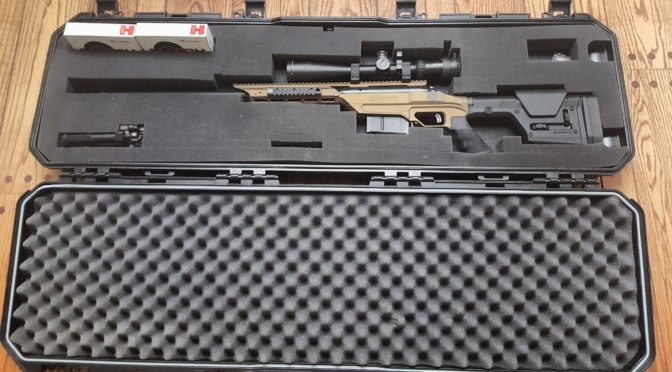It’s funny how a person’s views can change over time. When my dad I first started going to gun shows back in the early 1980s, my idea of a gun case was a naugahyde bag that was long enough with straps that I could close on the rifle. Then again, my budget was about $10-20 for the case and usually about $100-150 for the firearm. Times change.
I’ve heard it said that the difference between men and boys is the price of their toys and that just may be true. Now when I buy and tune a rifle and put a big optic on it, I want it protected – well protected. When I first started buying hard cases I would get the kind with the egg crate style foam that could generically hold anything with no modification. The downside with the egg crate cases is that they don’t hold things very securely – if you drop the case hard enough, the contents will move including the weapon and any accessories or ammo you have stored in the main compartment As a result, I shifted away from these cases some years ago for my bigger and heavier rifles.
To make a hard case that is tailored to what you want to store in it, you have two routes. The best in my opinion are cases with hard foam that you cut to exactly fit what you want. These cases hold your contents very securely. The con is taking the time to cut out the foam. It’s not a huge overhead but they also tend to cost a bit more for a good case such as a Pelican.
Option two is to still use a hardcase but one with pluckable foam. This means the the foam has been pre-cut into little vertical rectangular columns that are partially connected to one another but can be pulled apart or “plucked” out.
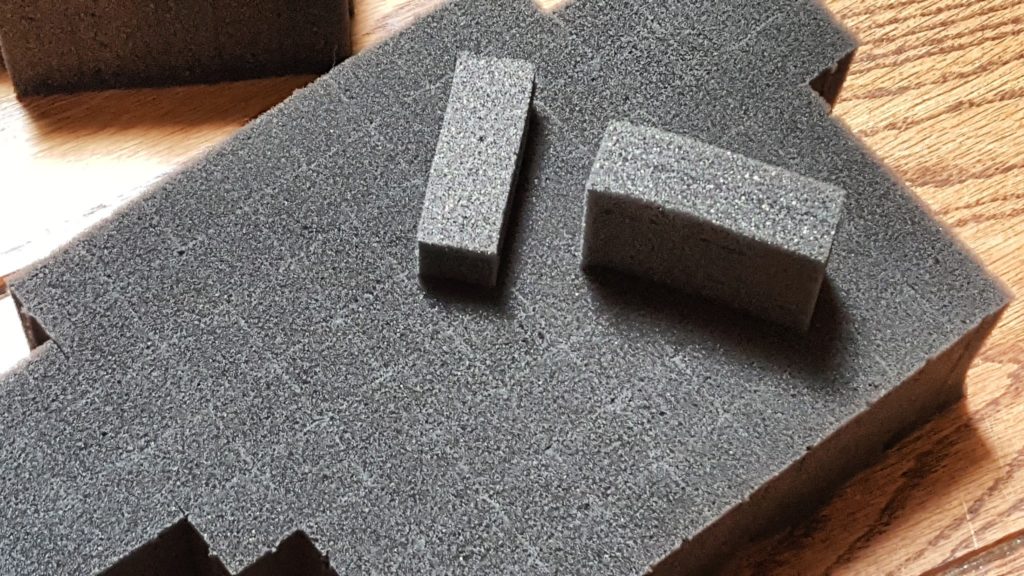
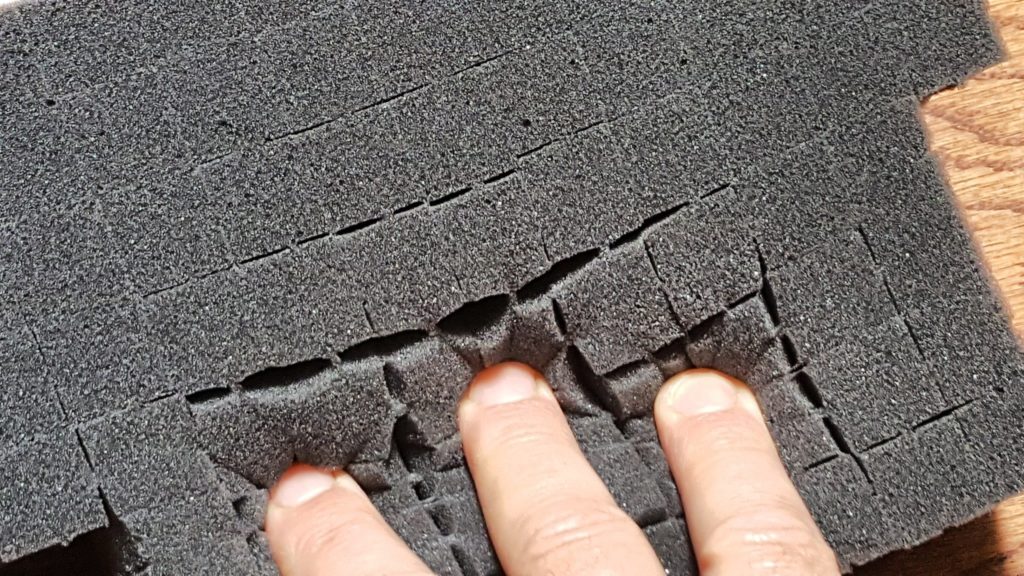
Now the pros are that these cases can be affordable and are easy to work with. The con is that the foam is very flimsy an I stay away from really fine details a single piece tends to break way from the other pieces very easily. In short, I can’t fit the foam more closely to the contents *but* it still works and protects the contents better than an all eggshell hard case.
So, let me tell you about a Plano case I bought recently from Amazon. I have used a lot of these tough Plano hard cases with pluckable foam over the last few years but now they have a model out that I really like due to the construction. It’s the Plano “All Weather Series” and I bought the 52″ model to hold a Savage Stealth Evolution in .338 Lapua that is 48″ overall.
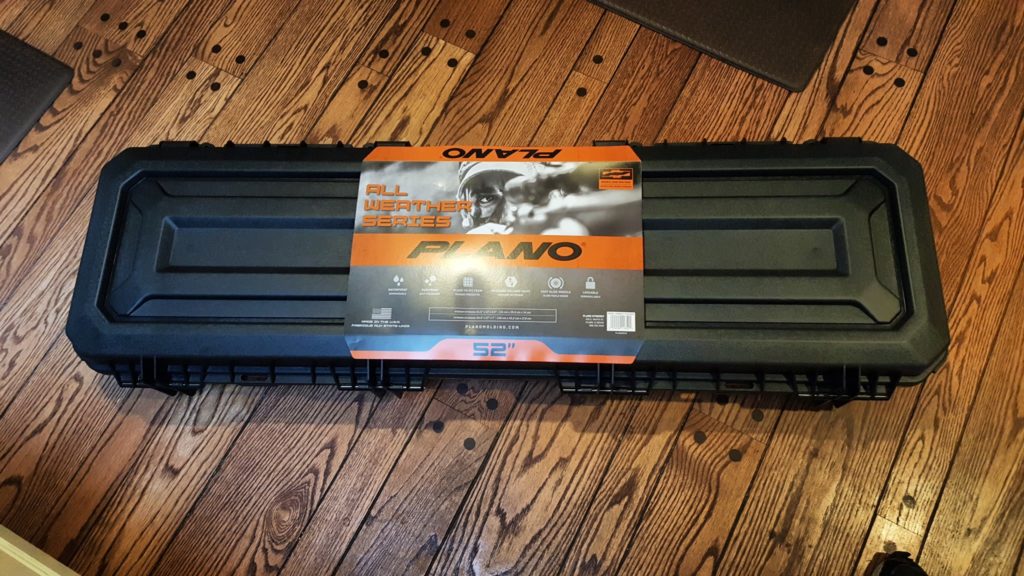
To get this case, make sure your item description contains “AW2” – I assume this means it is the second generation of the All Weather case and I like the handles way better than the previous version.
When you open the lid, you see the usual placard and keys but if you zoom in you can faintly see the border of non-scored foam that runs around the perimeter.
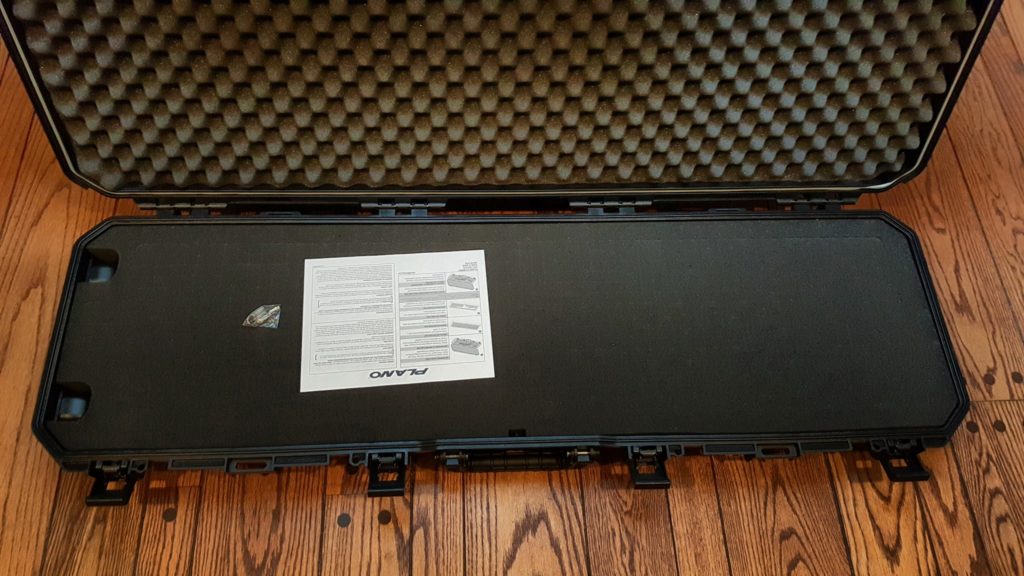
In the next photo, note that the middle pluckable portion pulls right out.
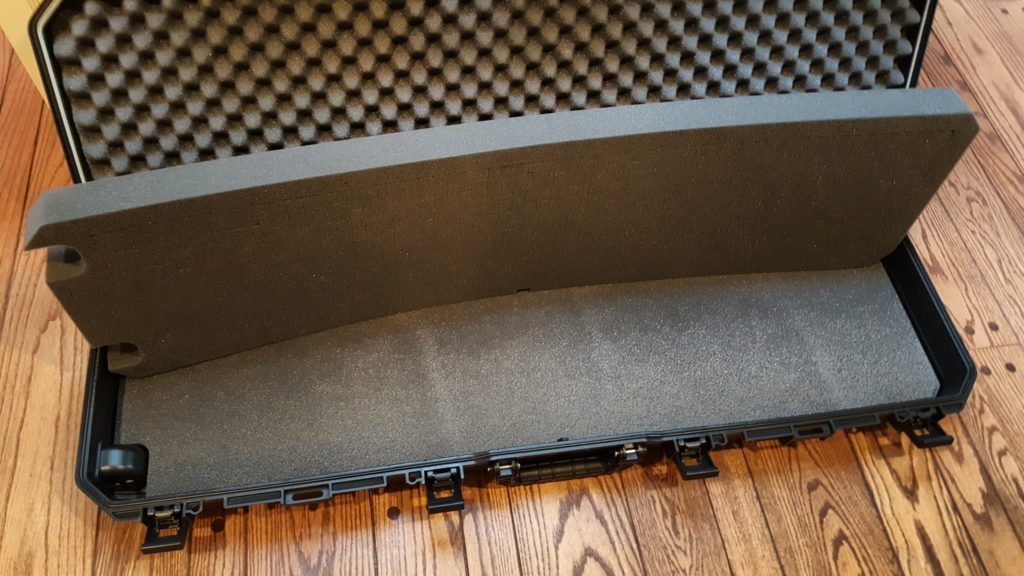
In the next photo, note that the latches are now four in the front and none on the ends. Some models have a latch inside the end handle and I find myself fumbling with it to get it to open. I’m happy to see them just on the front.
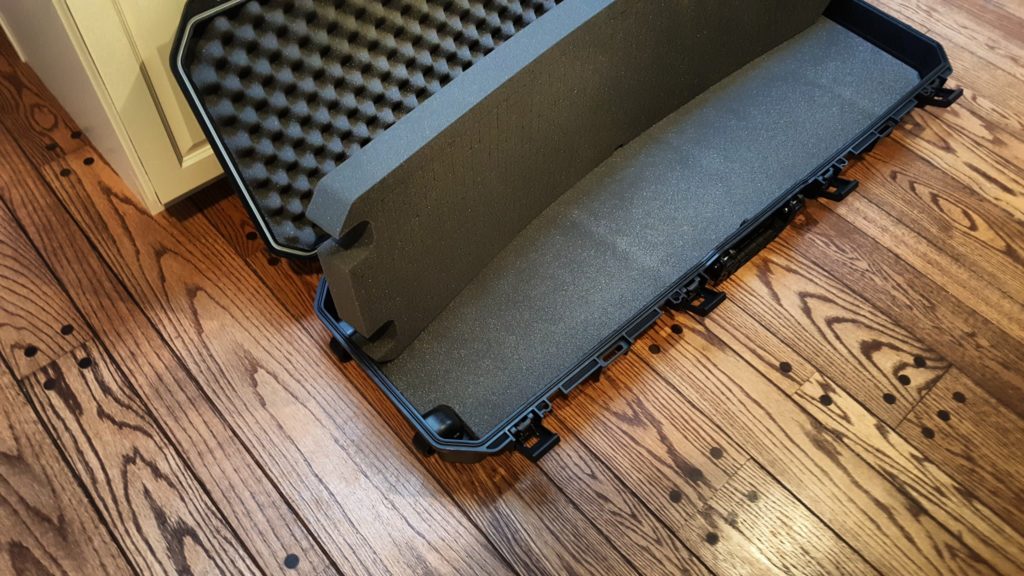
My preferred way of mounting a scoped rifle is to have the scope “up” towards the carry handle on the side and the muzzle towards the carry handle on the end which means the butt stock is down by the wheels. The reason for this is to protect the muzzle and the scope as much as possible. A jarring force when someone drops the case – especially when carrying it with the side handle and dropping it – will be absorbed by a non-critical end … in theory. You can never plan for everything and these cases are strong but not impenetrable. For example, I received a case once where a fork truck tine had skewered it. Amazon, as always, gave great customer service and shipped a replacement immediately.
Take the firearm and any accessories and lay them out on the back / the mirror side of the case. You are going to mark with permanent marker where stuff goes and you don’t want that showing up later. Now some folks will use chalk and blow it off. Others will pin paper outlines – whatever works for you. I use a Sharpie and try to remember that I need to flip the foam while keeping in mind the orientation of the weapon so you will note I have the rifle in the case scope down because I will just flip the foam afterwards.
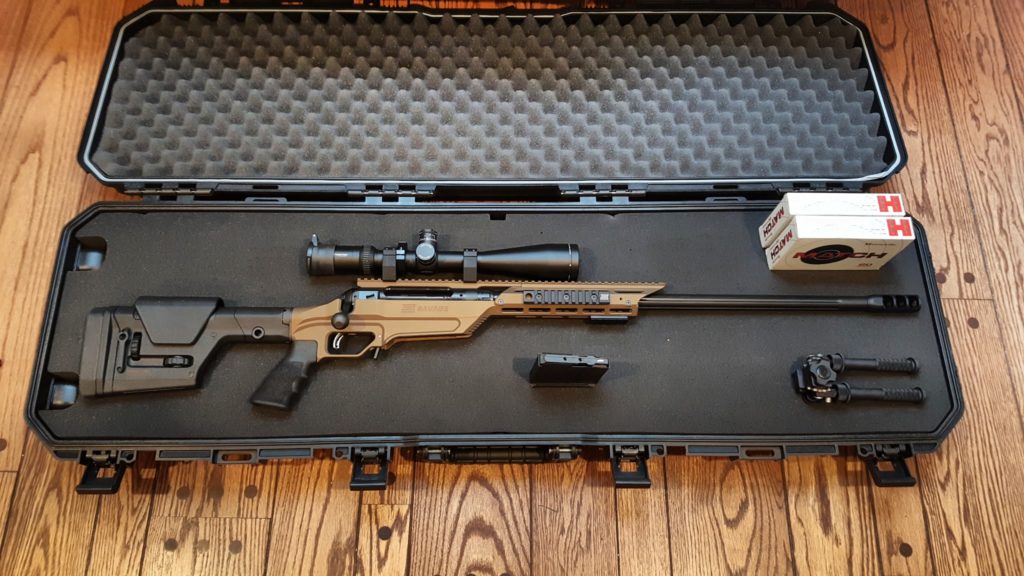
Out comes the old Sharpie marker and I trace everything. I traced the magazine in the rifle as well as a slot for the spare. Not I have the ammo boxes sitting on their side edge. I may trim the bottom foam out as it is a tight fit but I decided to run with that layout for now as the cartridges are very long and use a lot of real estate. I wound up turning the Atlas bipod on its side also after the above photo was taken so the profile changed.
In the next photo, note how the big recoil pad is coming right down to the wheel housing. The .338 Lapua Stealth Evolution is 48″ long so it is a tight fit in this case. I figured the rubber recoil pad would protect the rifle and literally have it right by the housing. The top of the scope and the bottom of the grip are right to the border of the pluckable area.
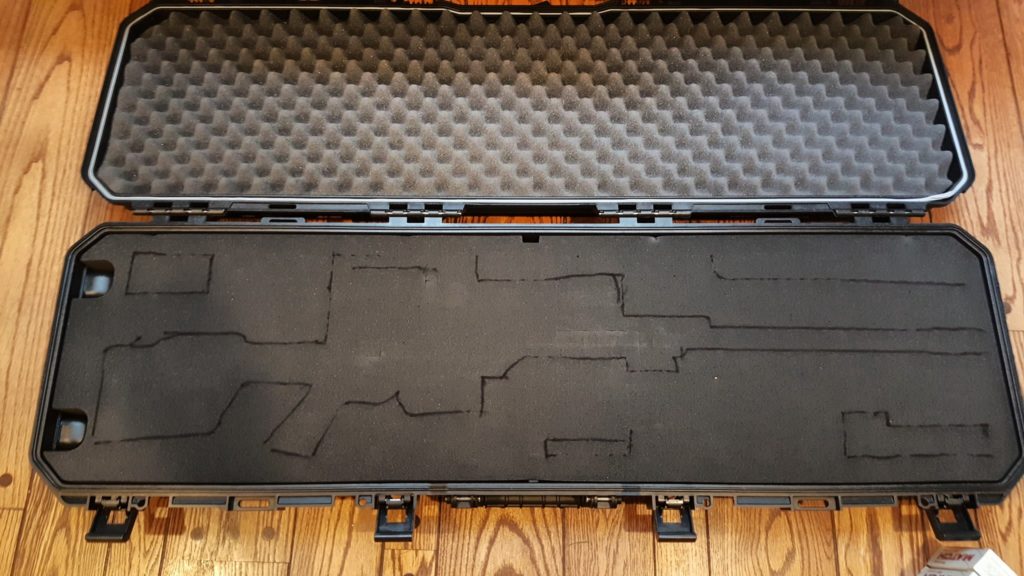
Now it is time to pluck! I stay within the lines and figure I can always remove more later. I do try to balance too close and will come apart later vs. too far away to protect the rifle. I pluck and test, pluck and test until I get it the way I want. Note how I have now reversed the foam – you don’t see any marker lines and the rifle is now oriented the way I want.
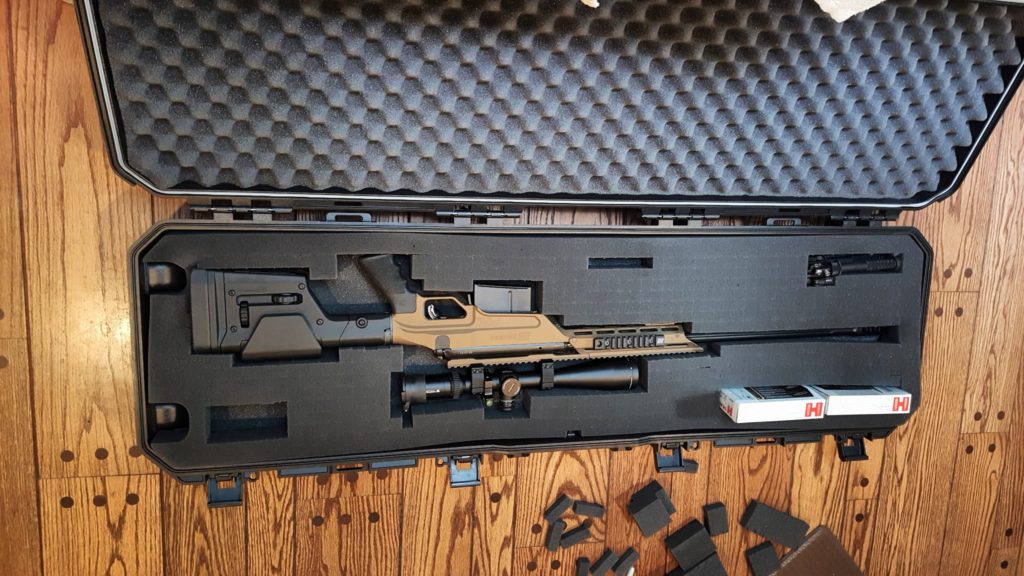
The next step is to take the insert outside and spray and adhesive on it to glue it in place. You need to do this and apply it relatively heavily or it will pull out of position and flop around. I use the 3M Super 77 spray adhesive and only spray the pluckable insert.
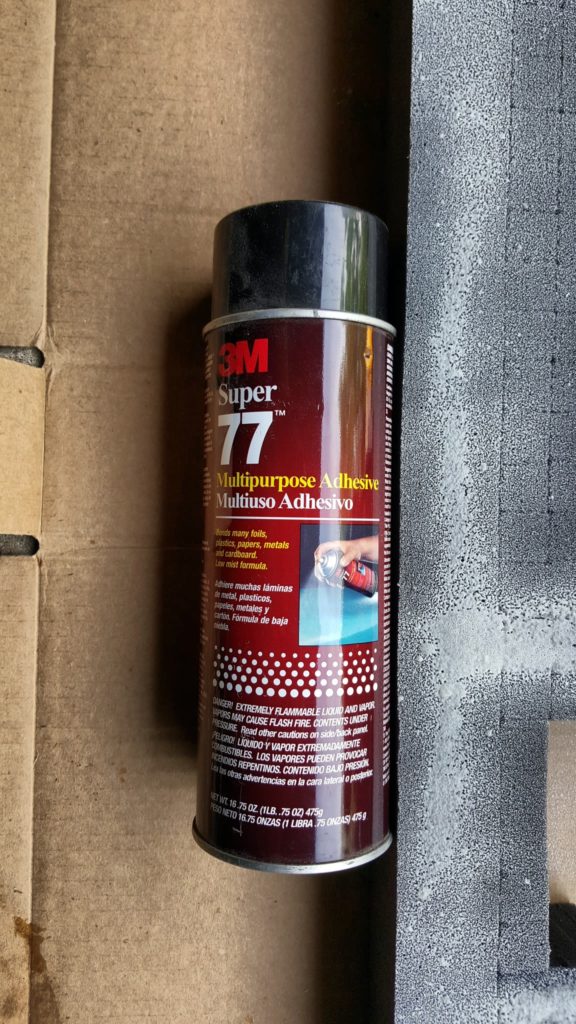
The end result is stronger if you apply the adhesive to both surfaces but it is very messy to deal with. If you really want to do this, one trick is to save the foam you plucked out, cut it in half lengthwise and glue it in to the bottom. Some guys like this as the firearm and accessories aren’t as deep in the foam. In this case, I am just doing the one side so I applied it thick. Make sure you do the right side … yeah, I’ve made that mistake too.
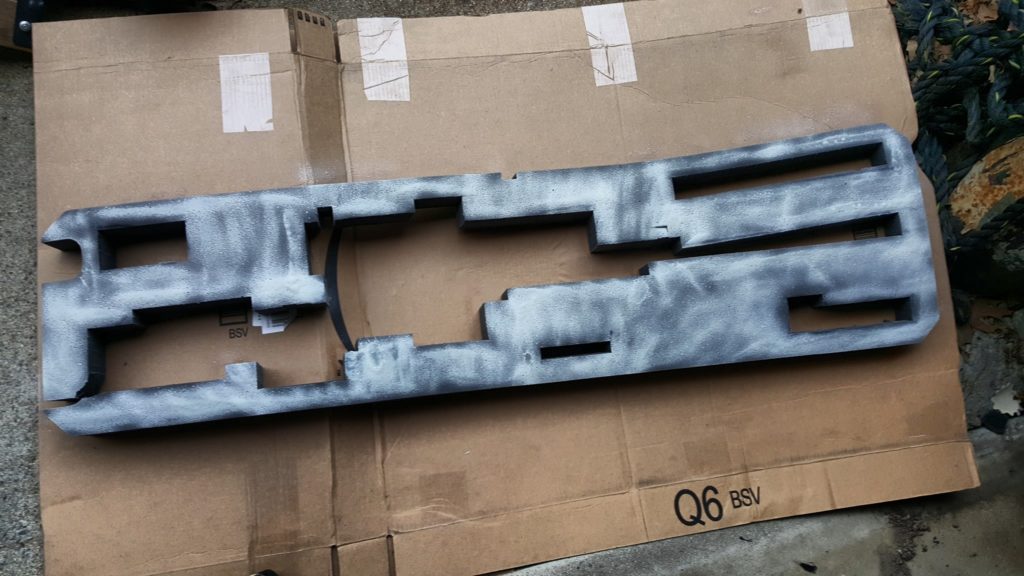
Let it sit for about 5 minutes so it gets tacky and then put it back on the lower piece. Move quickly before it sets up and make sure everything is straight. If you get the adhesive on stuff you don’t mean to, it can be readily cleaned up with turpentine while still wet. I always have stuff I have to clean up.
Once you have the insert glued in place, be sure to let it dry for 6-8 hours. I’ve had problems in the past if stuff sticking to firearms so I let it sit a good long time just to play it safe. The warmer it is, the faster it will dry and cure.
Here’s the finished case. You can see how the rifle completely fills it. I wish I had a bit more buffer for protection but it is pretty good. I will definitely do some more tuning on the ammo section.
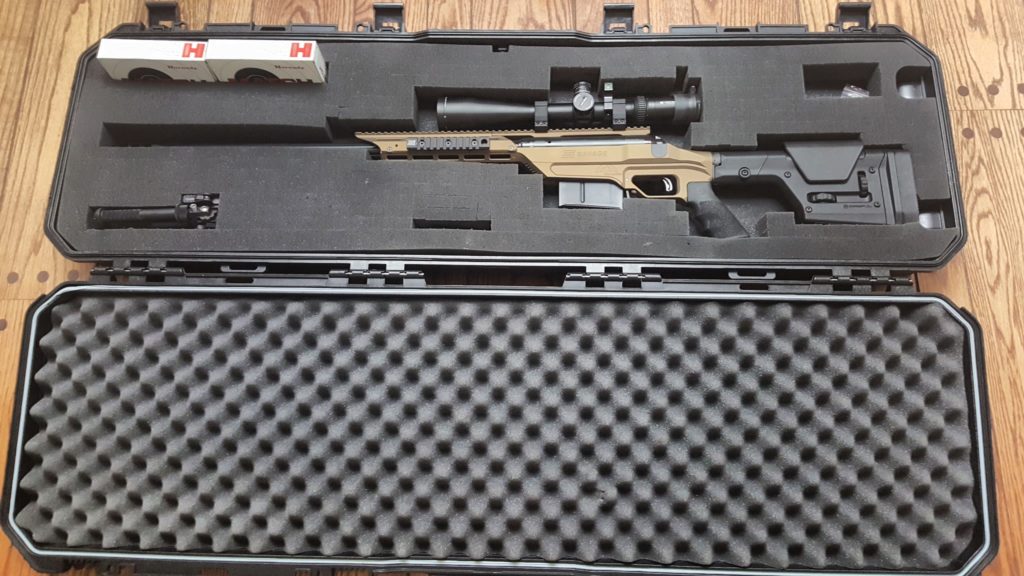
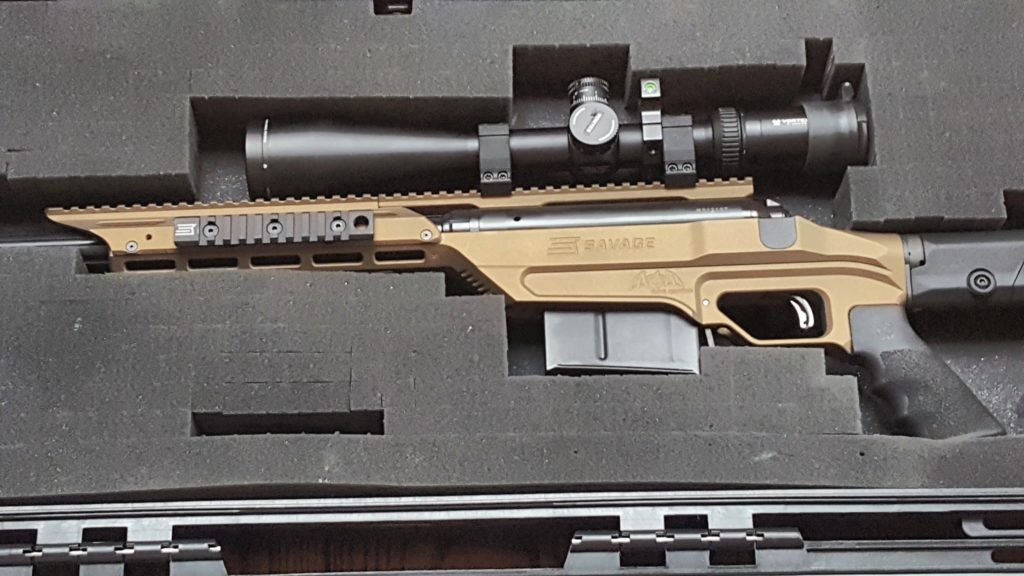
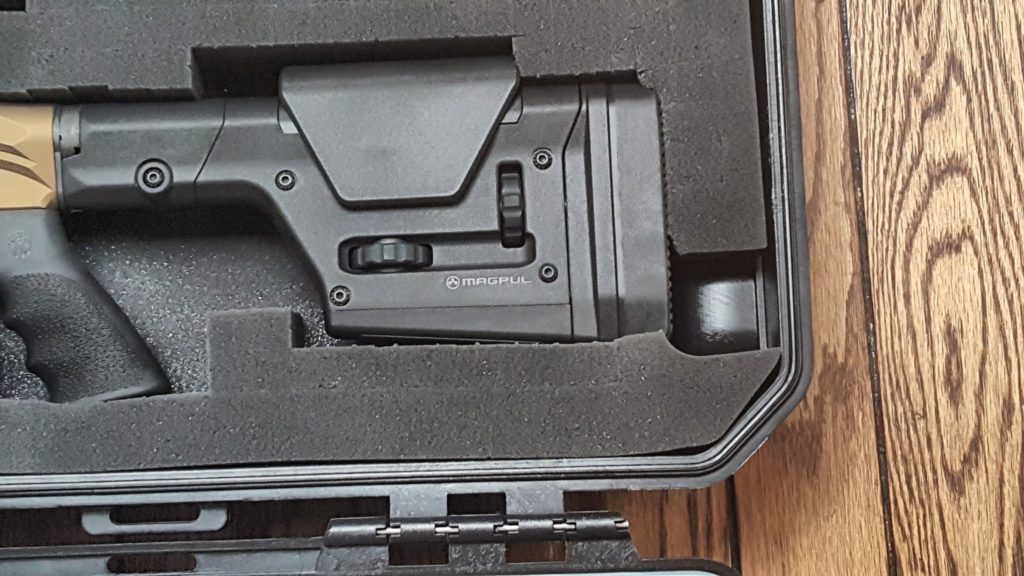
I really like the case and think it’s going to do a good enough job for me. I don’t plan on using it for anything incredibly rough – mainly range trips and it’ll handle those just fine. I’d definitely recommend this case to someone who wants a very good mix of affordability and quality.
If you find this post useful, please share the link on Facebook, with your friends, etc. Your support is much appreciated and if you have any feedback, please email me at in**@*********ps.com. Please note that for links to other websites, we are only paid if there is an affiliate program such as Avantlink, Impact, Amazon and eBay and only if you purchase something. If you’d like to directly contribute towards our continued reporting, please visit our funding page.
